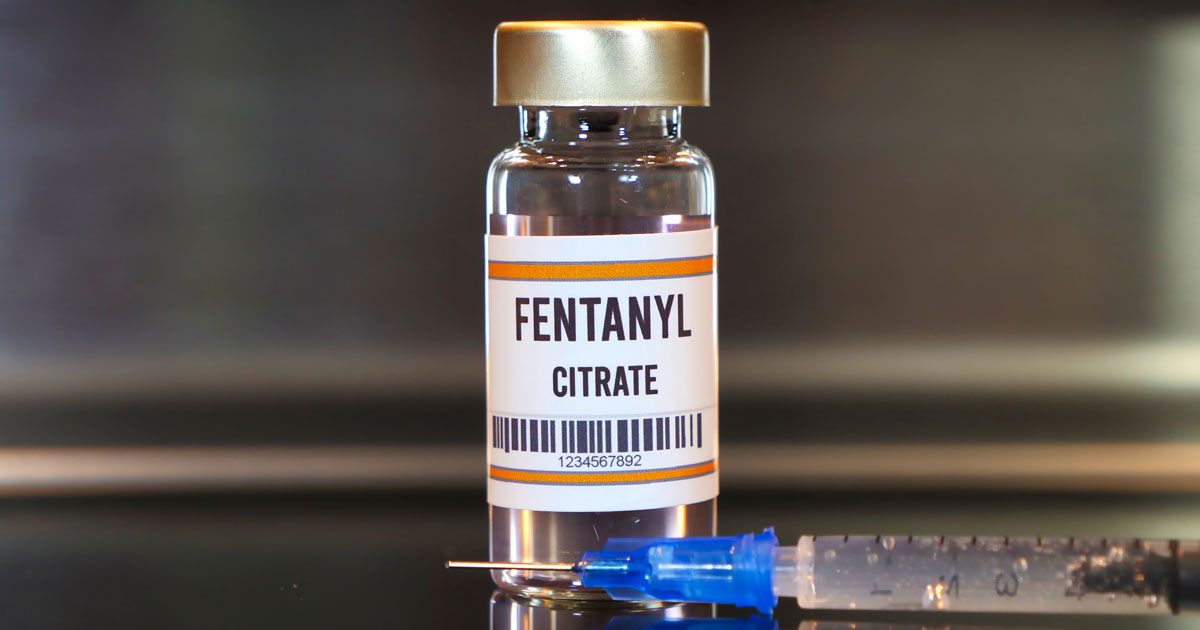Fentanyl is an infamous drug that has been frequently appearing in the headlines recently. As a powerful synthetic opioid known for its addictive and dangerous properties, it’s no surprise that there is a great deal of fear buzzing about this drug – much of it is warranted. Some of this information, however, is misleading, incomplete, or flat-out inaccurate, spreading an unhelpful amount of panic via rumors and half-truths.
Fentanyl Myths and Facts
There are many myths surrounding the use of fentanyl, which is a prescription medication created with the intent to minimize human pain. It’s important to get the facts straight so that if you are using or know someone who is using, so you can understand what’s safe and what’s likely to be dangerous.
Is Fentanyl Only Used in Hospitals?
While it is indeed used in hospitals as a powerful pain medication, that’s not the only place you may see legal use. Pharmaceutical-grade fentanyl can also be prescribed by a doctor to patients in need of pain relief, though it must come with specific recommended doses and monitoring like all prescription drugs.
Unfortunately, it is also widely distributed as an illicit street drug, which is the way many people who use other substances may come into contact with the drug. Illicitly produced fentanyl is manufactured in amateur drug factories and then sold on the black market or mixed with other drugs. Illicit fentanyl is the cause of most overdoses because its purity and potency is not regulated, and it may be mixed in with other drugs and taken by unsuspecting people.
Is Fentanyl Only Dangerous if You Inject It?
While injecting it directly into your bloodstream is the most dangerous way to use it, it’s not the only method that poses a risk. Not only are there multiple forms that illicit fentanyl can take, including nasal sprays and eye droppers, but it’s also possible to inhale. As noted, powdered illicit fentanyl is often mixed into other street drugs, like cocaine, without warning. Each of these methods is capable of causing an overdose.
Can It Be Used Safely?
Because it’s available as a prescription pharmaceutical, as well as used in hospitals, fentanyl can indeed be used safely. It has been used in clinical settings for decades, and if it’s used responsibly, it can help with pain without causing harm. Unfortunately, as an opioid medication, dependence can occur after extended use. The key is to make sure you limit dosage, reduce the frequency of use, and always get help if you believe someone is experiencing negative symptoms.

Why Is Fentanyl Used?
As a pain medication, fentanyl is used correctly in clinical spaces to provide relief from severe pain. As an illicit drug, fentanyl is often used for its powerful and potent sedative effects, as well as the sense of euphoria it can cause. It also may be used as a potency boost for other illicit street drugs, both to increase its addictive potential and because it can be cheaply made.
Fentanyl is a highly powerful pain medication that is 50 times stronger than heroin, which means it’s not only more dangerous, but it’s also much more effective. People should not consider using fentanyl if not prescribed by a doctor. Use fentanyl only as long as it is needed to reduce a person’s pain, and seek help if a person reports needing more after the prescription has lapsed.
Can Touching Fentanyl Kill You?
While the risk of accidentally absorbing fentanyl through touch is a real one, it’s not possible for this to cause an overdose. This is because fentanyl won’t have an effect unless it gets into a person’s bloodstream or passes through a mucus membrane, like those in your nose or mouth. This cannot happen via simple absorption through one’s skin. Because of this, professionals can handle fentanyl every day without risking an overdose.
Fentanyl, like all drugs, must be ingested or inhaled to have an impact. Merely being in the same room as fentanyl will not pose a risk. If it did, doctors would not be able to store fentanyl as a pain medication in hospitals, and street dealers would never be able to sell it to consumers.
Can Fentanyl Overdoses Be Cured?
While overdoses are a leading cause of death in the United States, that doesn’t mean they are fatal. In fact, overdose can be reversed if someone seeks help in time. Drugs like naloxone (brand name Narcan) can counteract the overdose if they are provided to people in a timely manner. There’s a related myth that fentanyl cannot be stopped by naloxone, which is patently untrue.

Is Naloxone the Only Cure for a Fentanyl Overdose?
It’s true that naloxone is a valuable tool in helping someone survive and overcome an overdose. However, it’s not the only way to help, and it should not be relied on without using other methods. If you suspect that someone you know is suffering from a fentanyl overdose and it’s not possible to help them with naloxone, call 911 immediately.
Are Fentanyl Users Always Seeking Fentanyl?
Just because some users are intentionally using the drug for a powerful effect, that doesn’t mean that is the intention of every person using the substance. Many people who overdose on fentanyl do so by accident, not realizing that it was mixed into the drug they intended to use.
While this does mean that many users were also using other drugs before that point, this is an issue that must be treated with the gravity it deserves, as a large number of overdoses would not have occurred if fentanyl was not added without the consumer’s knowledge.
This is not how substance use disorders work. Not only can fentanyl be introduced to someone by accident, causing a craving they weren’t prepared to fight, but it can also be prescribed by a doctor. Prescription pain medications can be highly addictive even if someone is using the medication properly. Once a substance use disorder sets in, a person needs to fulfill their craving or face withdrawal symptoms.
Is Everyone Equally at Risk of an Overdose?
Just because it is easily acquired and is unfortunately common in the United States, that does not mean that every community is at equal risk of suffering from overdoses. For example, Black males are at the highest risk of a drug overdose, especially when it comes to opioids. This is true for several reasons, including economic disparity and underfunded communities, and the fact that many Black communities are in urban settings where substances are more frequently available.
Is Fentanyl the Most Dangerous Drug?
It is a very dangerous drug and is a major player in the modern opioid epidemic. However, it is not the only dangerous drug circulating the streets. For example, xylazine, also known as “tranq,” is another modern drug that may be even more dangerous. Part of the reason why fentanyl, in particular, is so infamous is because of how easy it is to access poorly manufactured, highly potent forms, not solely because it’s the most dangerous drug someone can take.
Injected fentanyl carries the highest risk of an overdose, which technically makes it the most dangerous method. However, it’s also highly risky to take when it has been added to other drugs. This is because if someone isn’t aware they’re taking fentanyl, they can’t control their dose or even prepare for the possible effects, leading to a high risk for anyone who takes illicit drugs.

What’s the Safest Way to Take Fentanyl?
The safest way to take it is when it is prescribed by a physician and dispensed by patches so you can absorb the drug via the skin. These patches are used specifically to manage pain and can’t give you the same powerful effects that you’d get using other forms. This method allows someone to relieve their pain with reduced risk, especially if monitored by a doctor.
What Are the Signs of a Fentanyl Overdose?
Small or “pinpoint” pupils, drowsiness, a loss of consciousness, slow, weak, or stopped breathing, choking noises, cold and/or discolored skin, and a limp body are all signs that someone is overdosing. These symptoms can be serious and life-threatening or subtle and potentially difficult to notice, so pay attention and be sure to get help if you notice one or more of these warning signs.
Fentanyl Risks
The risks associated with taking fentanyl are also often in question. While the drug is absolutely a leading cause of both fatal and non-fatal overdoses in the United States, there is still misinformation being spread about exactly how dangerous it is, as well as regarding the ways in which it can harm a person.
Some myths center around the people who use the drug. Not only are these rumors damaging to the people who need help, as it tends to frame them in a negative light, but it also causes harm to the community. The more we spread misinformation, whether it is about people with a substance use disorder or people taking prescription fentanyl as prescribed, the more these issues are stigmatized, and the less likely it is for people to come forward and get the help they need. Of course, regardless of why or how, anyone suffering from a substance use disorder deserves help and sympathy, not social scorn.
Get More Info from Our Addiction Recovery Community
The truth is that fentanyl is a prescription medication with a purpose, and like every drug, it’s dangerous if taken unsafely. Unsafe use can lead to dependence, withdrawals, and overdose, which can all too often lead to death. While it has earned its reputation as a threat due to the recent rise in the number of overdose cases, it’s important to distinguish fact from fiction and focus on keeping the people around you and yourself safe.
For more information about fentanyl and other harmful substances circulating through our communities, as well as resources regarding substance use disorder treatment and recovery, subscribe to our addiction recovery community.
References :




